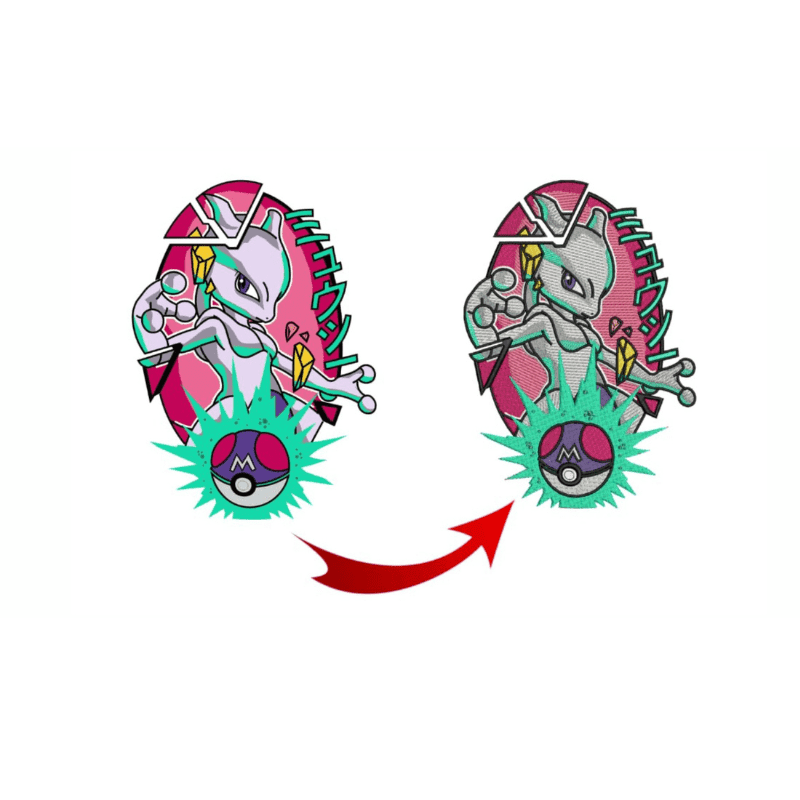Expert Digitizing for Embroidery: High-Quality Designs
Discover Different Types of Needlework Digitizing Methods
Needlework digitizing has actually advanced considerably over the years, providing a myriad of methods to bring layouts to life in the electronic realm. The world extends to a lot more innovative techniques like photorealistic needlework digitizing and the remarkable world of 3D needlework digitizing.
Typical Hand Embroidery Digitizing
Conventional hand embroidery digitizing entails the procedure of converting complex hand-stitched layouts into digital styles for device needlework. This technique needs experienced craftsmens to diligently evaluate the handmade layout and afterwards use specialized software application to recreate it in a digital layout. Each stitch, color, and detail needs to be thoroughly equated to make sure that the significance of the initial hand needlework is preserved in the digital version.
One of the crucial obstacles of conventional hand needlework digitizing is capturing the intricacies and nuances of the handmade style. Digitizing for Embroidery. Craftsmens have to have a deep understanding of various embroidery methods, such as satin stitch, chain stitch, and French knots, to properly duplicate these techniques in the digital realm. Additionally, they require to have a keen eye for detail to make sure that the electronic style keeps the exact same level of virtuosity and craftsmanship as the original hand-stitched item
Punching Strategy
To effortlessly transition from traditional hand embroidery digitizing to the punching strategy, craftsmens should currently concentrate on transforming the complex electronic styles into guidelines that embroidery machines can interpret. The boxing technique includes utilizing specialized software program to develop electronic files which contain commands for the needlework machine to adhere to. This process calls for a deep understanding of not simply the style itself but additionally the abilities and restrictions of the needlework maker.

Auto-Digitizing Software Program Programs
Needlework digitizing has been revolutionized by the development of auto-digitizing software program programs, giving craftsmens with advanced tools to convert electronic layouts right into needlework device instructions effectively. Auto-digitizing software program programs use formulas to analyze electronic images or vector documents and produce needlework designs immediately. These programs enable fast and precise conversion of intricate styles right into stitch patterns, saving effort and time for embroiderers.
Among the crucial advantages of auto-digitizing software is its straightforward interface, making it easily accessible to both beginners and seasoned digitizers. These programs usually consist of features such as stitch editing tools, string shade matching, and the ability to preview the final embroidered style. In addition, auto-digitizing software can take care of complicated styles with several colors and elaborate information, creating premium needlework data appropriate for various apparel and fabric tasks.
While auto-digitizing software application uses benefit and performance, it is vital for individuals read this post here to understand the limitations of automated digitizing. Fine-tuning and manual changes may still be needed to accomplish the preferred embroidery quality, specifically when taking care of detailed or one-of-a-kind styles. By leveraging the abilities of auto-digitizing software application along with hand-operated digitizing strategies, artisans can improve their needlework digitizing process and develop spectacular embroidered pieces.
Photorealistic Embroidery Digitizing
Making use of sophisticated digital imaging methods, attaining photorealistic cause embroidery digitizing has actually come to be an in-demand skill among modern craftsmens. This strategy involves transforming high-resolution pictures right into elaborate stitch patterns that closely simulate the original layout, resulting in needlework pieces go right here that display natural detail and deepness.
To achieve photorealistic embroidery digitizing, artisans should have an eager eye for information and a detailed understanding of how various stitch types and thickness can influence the last result. By very carefully mapping out each shade and color in the picture, embroiderers can develop a digital data that guides the needlework device to reproduce the nuances of the initial image precisely.
Photorealistic embroidery digitizing is particularly popular in creating personalized layouts for garments, home decoration, and art pieces where catching the essence of a picture or art work is crucial. This technique allows artisans to change memories, landscapes, pictures, and detailed art work into stunning embroidered masterpieces that showcase a mix of traditional workmanship and advanced modern have a peek here technology.
3D Needlework Digitizing
With the development of electronic imaging methods in attaining photorealistic cause needlework digitizing, the expedition of 'D Embroidery Digitizing' uses a new dimension to the intricacies of layout replication. 'D Needlework Digitizing' describes the three-dimensional digitizing technique that includes depth and texture to embroidery layouts, producing a more reasonable and aesthetically enticing end product. This strategy makes use of software that imitates the effect of light and shadow on the embroidery style, improving its general visual influence.
Among the essential advantages of 'D Needlework Digitizing' is its ability to make designs look more natural and vibrant. By including deepness to the needlework design, the last product shows up much more reasonable and fascinating (Digitizing for Embroidery). In addition, this method permits more imaginative flexibility in layout implementation, making it possible for embroiderers to experiment with different textures and impacts that were previously testing to accomplish
Final Thought
